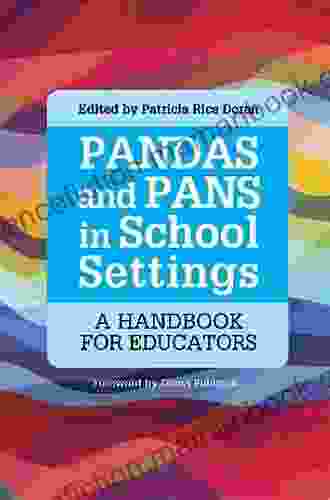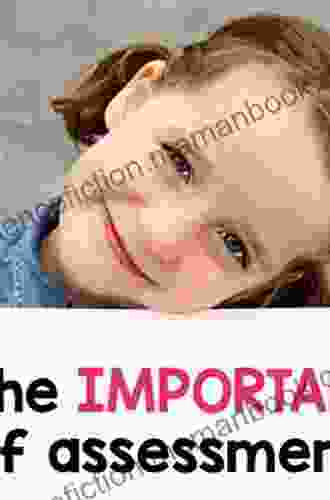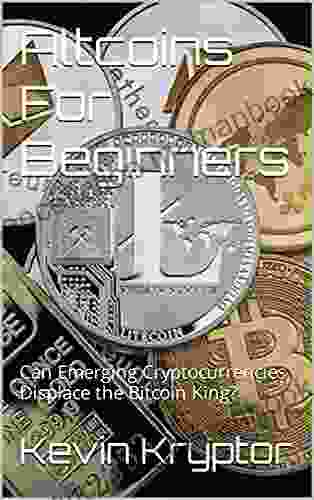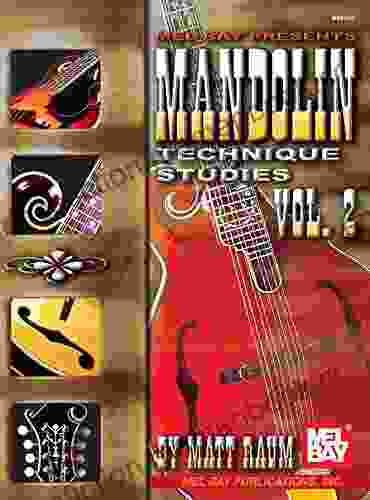Unveiling the Essence of Assessment: The What, Why, and How

Assessment, an integral component of education and skill development, holds immense significance in shaping learning outcomes and driving effective teaching practices. It serves as a diagnostic tool, providing valuable insights into the strengths and areas for improvement of students and organizations alike. This comprehensive article delves into the multifaceted nature of assessment, exploring its purpose, types, benefits, and practical implementation strategies.
1. The "What": Understanding the Purpose of Assessment
Assessment encompasses a wide range of methods and techniques used to gather information about learners' knowledge, skills, abilities, and attitudes. Its primary purpose is to provide feedback and insights to guide learning, inform decisions, and foster growth. Assessment serves various purposes, including:
4.7 out of 5
| Language | : | English |
| File size | : | 4936 KB |
| Text-to-Speech | : | Enabled |
| Screen Reader | : | Supported |
| Enhanced typesetting | : | Enabled |
| Word Wise | : | Enabled |
| Print length | : | 208 pages |
- Diagnostic Assessment: Identifying students' strengths and weaknesses to tailor instruction accordingly.
- Formative Assessment: Providing ongoing feedback during the learning process to support students' progress.
- Summative Assessment: Measuring overall achievement at the end of a unit, course, or program.
- Placement Assessment: Determining students' readiness for a particular course or level.
- Accountability Assessment: Evaluating the effectiveness of educational programs and institutions.
2. The "Why": The Importance of Assessment
Assessment plays a crucial role in enhancing learning experiences and promoting effective teaching practices. Its benefits are far-reaching and include:
- Improved Learning: Assessment provides students with feedback on their progress, allowing them to identify areas for improvement and set learning goals.
- Personalized Instruction: Assessment helps teachers tailor instruction to the individual needs of students, ensuring that learning content and activities are appropriately challenging.
- Informed Decision-Making: Assessment data supports informed decisions about students' placement, instructional strategies, and resource allocation.
- Program Evaluation: Assessment enables educators and administrators to evaluate the effectiveness of educational programs and make data-driven improvements.
- Accountability: Assessment provides evidence of student learning and program outcomes, facilitating transparency and accountability.
3. The "How": Types and Methods of Assessment
There exists a wide array of assessment types and methods, each serving a specific purpose and context. Common assessment formats include:
a) Formal Assessments
- Exams (objective and subjective): Tests with structured questions and answer choices or open-ended questions requiring written responses.
- Essays: Extended pieces of writing that assess students' knowledge, critical thinking, and writing skills.
- Projects: Assignments that require students to demonstrate their understanding through research, presentations, or creative endeavors.
- Portfolios: Collections of student work showcasing their progress and achievements over time.
b) Informal Assessments
- Observations: Recording students' behaviors, interactions, and participation during lessons.
- Questioning: Posing questions to students during discussions to assess their understanding.
- Self-Assessment: Students reflect on their own learning, identifying areas for growth and improvement.
- Exit Tickets: Short assessments at the end of a lesson to gauge students' comprehension.
c) Alternative Assessments
- Performance-Based Assessments: Evaluating students' ability to apply skills and knowledge in real-world contexts.
- Portfolios: Showcasing students' learning journey and growth over time.
- Authentic Assessments: Assessing students' abilities in tasks that replicate real-life situations.
4. Practical Implementation of Assessment Strategies
Effective implementation of assessment strategies requires careful planning and consideration. Here are some key principles:
- Align Assessment with Learning Goals: Ensure that assessments measure the objectives and skills being taught.
- Use a Variety of Assessment Methods: Employ a mix of formal and informal assessments to cater to different learning styles and skill sets.
- Provide Timely Feedback: Offer constructive and specific feedback to students promptly after assessment to maximize its impact.
- Involve Students in Assessment: Encourage students to participate in self-assessment and peer review to foster metacognitive skills.
- Use Assessment Data to Inform Instruction: Analyze assessment results to make informed decisions about teaching strategies and curriculum modifications.
- Establish Clear Assessment Criteria: Define assessment expectations and grading rubrics in advance to ensure fairness and transparency.
5. : The Enduring Value of Assessment
Assessment remains a cornerstone of effective education and skill development. By understanding its purpose, types, and practical implementation strategies, educators and organizations can harness its transformative power to enhance learning outcomes, foster growth, and continuously improve teaching practices. Assessment is not merely a means of measuring achievement but an integral part of the learning journey, guiding students and educators towards excellence.
4.7 out of 5
| Language | : | English |
| File size | : | 4936 KB |
| Text-to-Speech | : | Enabled |
| Screen Reader | : | Supported |
| Enhanced typesetting | : | Enabled |
| Word Wise | : | Enabled |
| Print length | : | 208 pages |
Do you want to contribute by writing guest posts on this blog?
Please contact us and send us a resume of previous articles that you have written.
 Top Book
Top Book Novel
Novel Fiction
Fiction Nonfiction
Nonfiction Literature
Literature Paperback
Paperback Hardcover
Hardcover E-book
E-book Audiobook
Audiobook Bestseller
Bestseller Classic
Classic Mystery
Mystery Thriller
Thriller Romance
Romance Fantasy
Fantasy Science Fiction
Science Fiction Biography
Biography Memoir
Memoir Autobiography
Autobiography Poetry
Poetry Drama
Drama Historical Fiction
Historical Fiction Self-help
Self-help Young Adult
Young Adult Childrens Books
Childrens Books Graphic Novel
Graphic Novel Anthology
Anthology Series
Series Encyclopedia
Encyclopedia Reference
Reference Guidebook
Guidebook Textbook
Textbook Workbook
Workbook Journal
Journal Diary
Diary Manuscript
Manuscript Folio
Folio Pulp Fiction
Pulp Fiction Short Stories
Short Stories Fairy Tales
Fairy Tales Fables
Fables Mythology
Mythology Philosophy
Philosophy Religion
Religion Spirituality
Spirituality Essays
Essays Critique
Critique Commentary
Commentary Glossary
Glossary Bibliography
Bibliography Index
Index Table of Contents
Table of Contents Preface
Preface Introduction
Introduction Foreword
Foreword Afterword
Afterword Appendices
Appendices Annotations
Annotations Footnotes
Footnotes Epilogue
Epilogue Prologue
Prologue Juddy Anderson C Punzalan
Juddy Anderson C Punzalan Robert Fripp
Robert Fripp Red Passion Writings
Red Passion Writings William A Owings
William A Owings Vivek Modi
Vivek Modi Kris T Bethke
Kris T Bethke Florence Peterson
Florence Peterson Shashank Nigam
Shashank Nigam Kimberley Payne
Kimberley Payne Ben Parris
Ben Parris Rick Rodgers
Rick Rodgers R Douglas Hurt
R Douglas Hurt Jim Norton
Jim Norton Cryssa Bazos
Cryssa Bazos Shell Teri
Shell Teri Jenny Ashcroft
Jenny Ashcroft Edward Willett
Edward Willett Sarah Steele
Sarah Steele Bryan Burrough
Bryan Burrough Bertram C Bruce
Bertram C Bruce
Light bulbAdvertise smarter! Our strategic ad space ensures maximum exposure. Reserve your spot today!

 Willie BlairRuby the Huntsman of Midnight: Unraveling the Enigmatic Hero of the Midnight...
Willie BlairRuby the Huntsman of Midnight: Unraveling the Enigmatic Hero of the Midnight... Ira CoxFollow ·19.8k
Ira CoxFollow ·19.8k Douglas PowellFollow ·13.9k
Douglas PowellFollow ·13.9k Peter CarterFollow ·8.2k
Peter CarterFollow ·8.2k Kelly BlairFollow ·12.6k
Kelly BlairFollow ·12.6k Guy PowellFollow ·13.9k
Guy PowellFollow ·13.9k Charlie ScottFollow ·9.3k
Charlie ScottFollow ·9.3k Patrick HayesFollow ·5.7k
Patrick HayesFollow ·5.7k Hugh ReedFollow ·2.8k
Hugh ReedFollow ·2.8k

 Ashton Reed
Ashton ReedClean(ish) Food for People Who Like to Eat Dirty
By: [Your Name] Are...

 Ronald Simmons
Ronald SimmonsThe Handbook for Educators: A Comprehensive Guide to...
The Handbook for...

 Derrick Hughes
Derrick HughesAny Place Hang My Hat: A Hauntingly Beautiful Novel by...
A Masterpiece of...

 Adrien Blair
Adrien BlairFly Me to the Moon Vol. 5: A Lunar Odyssey through...
In the vast...

 William Powell
William PowellTips By Gardeners On Variety Of Subjects
Gardening...
4.7 out of 5
| Language | : | English |
| File size | : | 4936 KB |
| Text-to-Speech | : | Enabled |
| Screen Reader | : | Supported |
| Enhanced typesetting | : | Enabled |
| Word Wise | : | Enabled |
| Print length | : | 208 pages |












